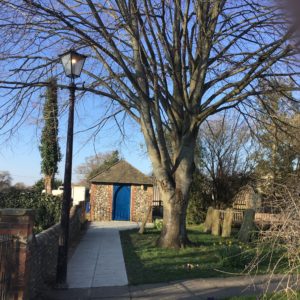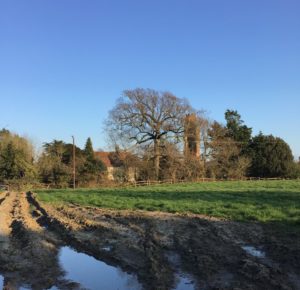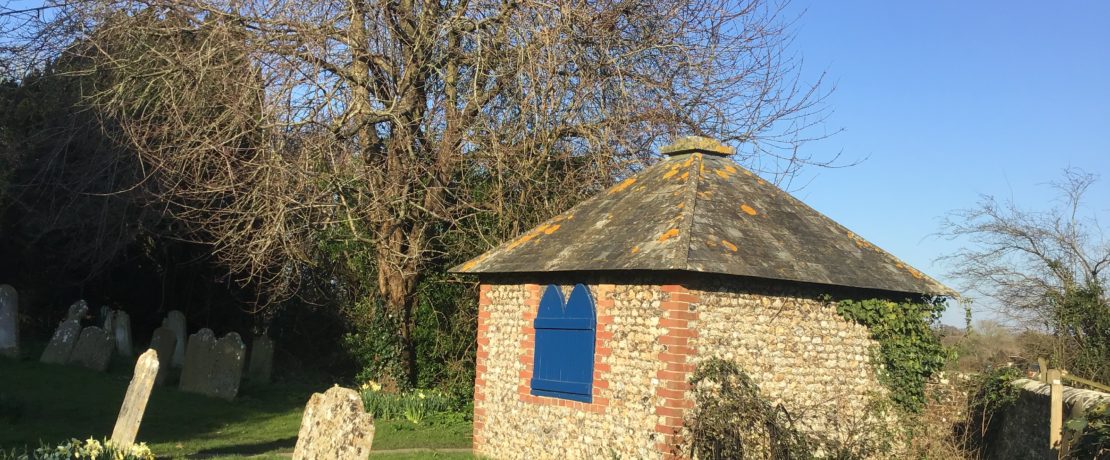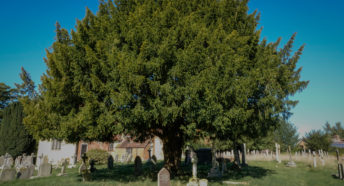Gravewatchers and ghosts
Here in Hampshire there is a reminder of a macabre chapter in our history …
When body snatching was rife, two huts were erected in the churchyard of St Thomas à Becket Church in Warblington.

Grave watchers were stationed in the huts to deter body snatchers. The latter were attracted to what was described as a “lonely but well-filled churchyard”. These ‘resurrectionists‘ dug up newly-buried bodies and sold them to doctors or medical schools. The corpses were then dissected or used in anatomy lectures.
Built out of flint in 1829, each hut had a fireplace and a chimney. Recent restoration work also unearthed a truckle bed and a blunderbuss inside one of the huts. The blunderbuss must indeed have been an effective deterrent against any would-be body snatchers! The huts were probably in use for only a few years, as the Anatomy Act of 1832 effectively ended the gruesome trade in body snatching.
Warblington is situated near the south coast of Hampshire, halfway between the towns of Havant and Emsworth. A Saxon settlement was first established there in the seventh century. By the year 1086, the population had grown to about 120 people. However, the village was cleared of its inhabitants in the 1400s by Richard Neville, 16th Earl of Warwick. As Lord of the Manor, he converted the area into a park for hunting deer.
Close by the church are the remains of Warblington Castle. In 1513, King Henry VIII gave the manor of Warblington to Margaret Pole, Countess of Salisbury. She had a new moated Manor House built there from 1515 to 1525. Unfortunately, Margaret Pole fell foul of the King. She was arrested and put on trial for supposed treason (though they were probably trumped-up charges). The doomed Countess was found guilty and beheaded at the Tower of London in 1541.
The headless ghost of Margaret Pole reputedly haunts the remains of Warblington Castle and the nearby churchyard. An apparition of a smuggler has also allegedly been seen in the area.
Sadly, most of Warblington Castle was destroyed during the English Civil War when it was besieged by Parliamentarian forces. A gate tower, a gateway and part of a wall are all that survive today. It is now a private property and there is no public access.

Located near the spreading urban growth of Havant, Warblington is also close to roads that carry huge amounts of traffic. We must surely strive to preserve such villages before they disappear altogether.

From the roundabout take the turning into Church Lane. There is parking near the church itself. The nearest refreshments are two miles away in Havant.









